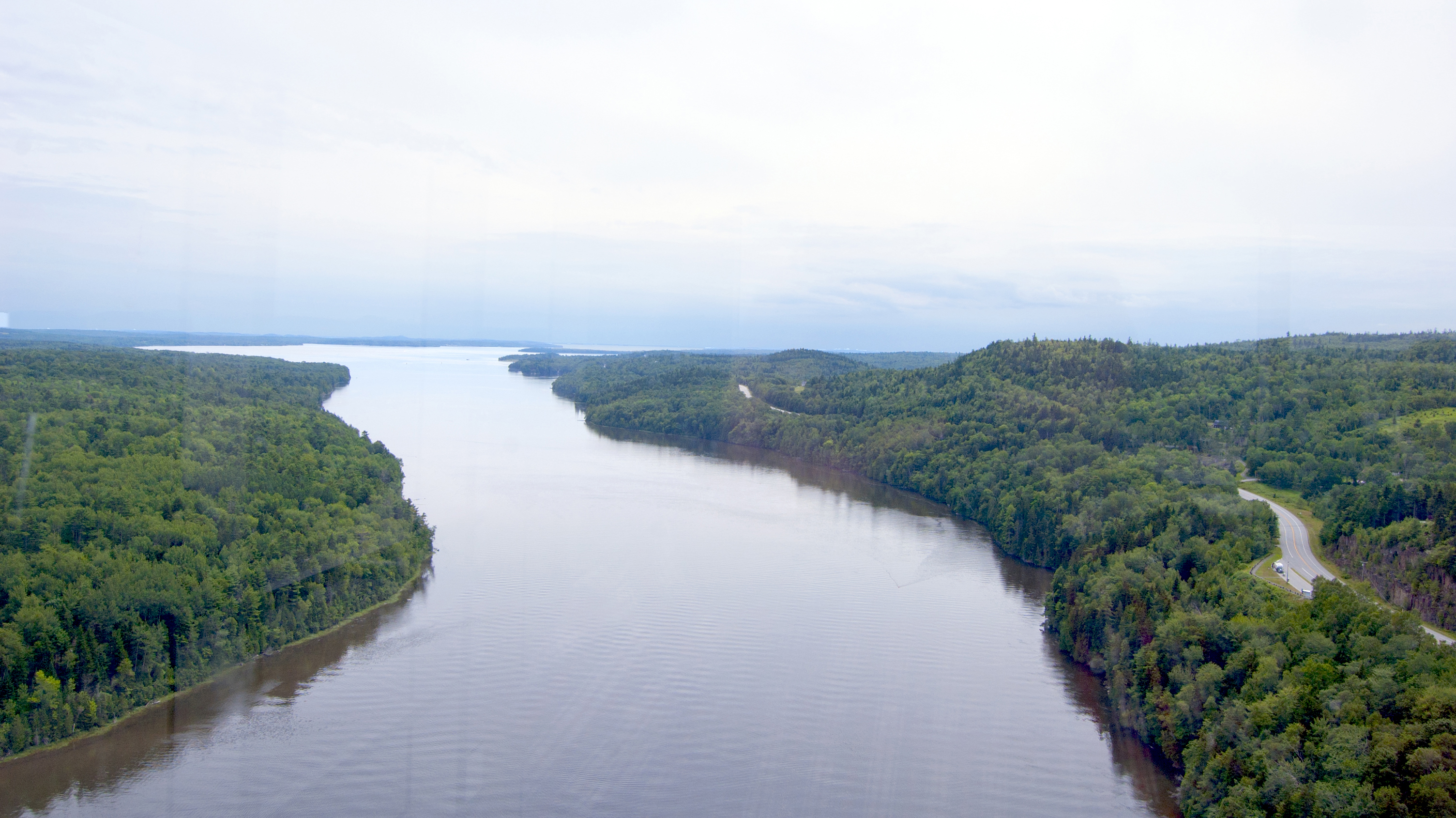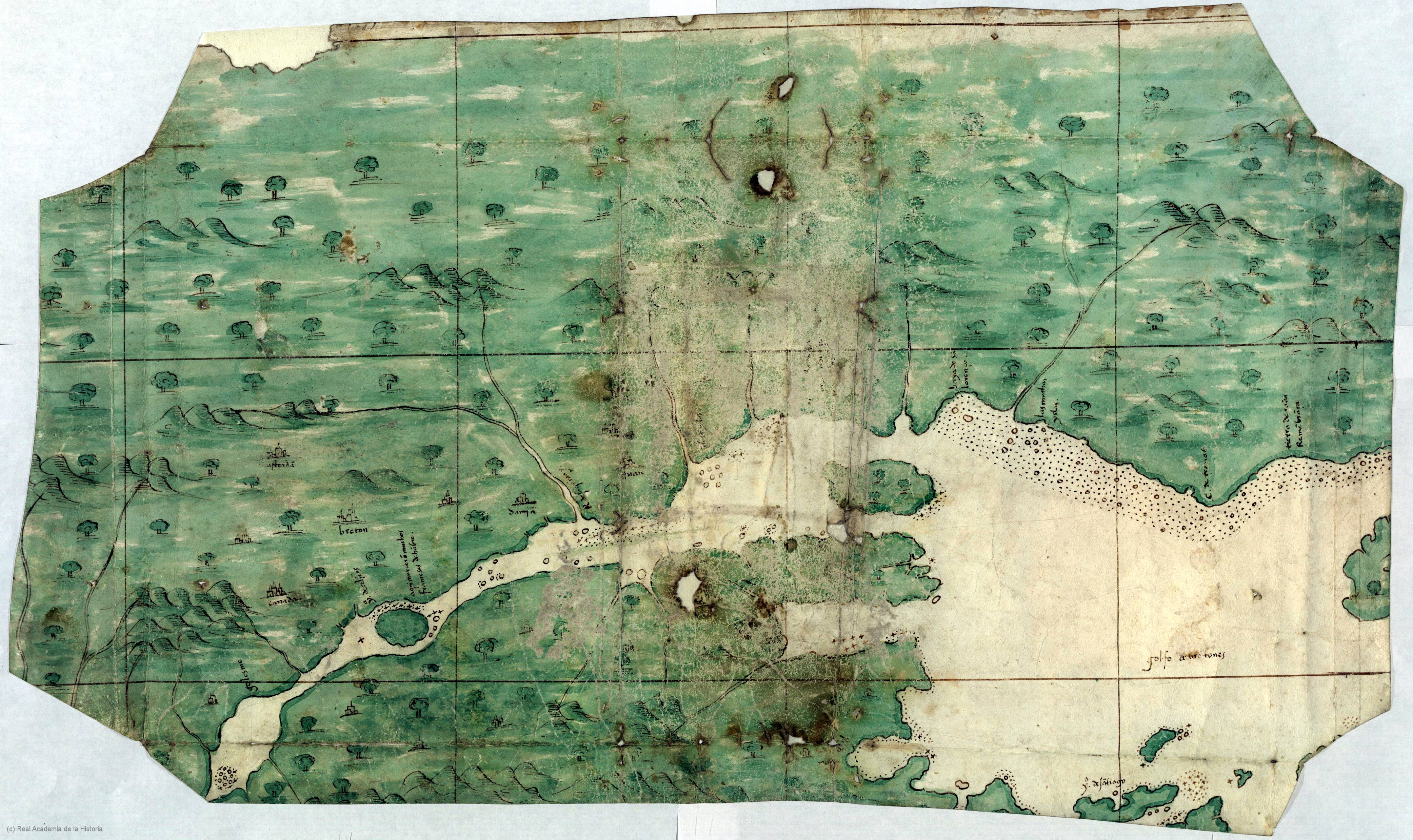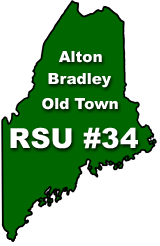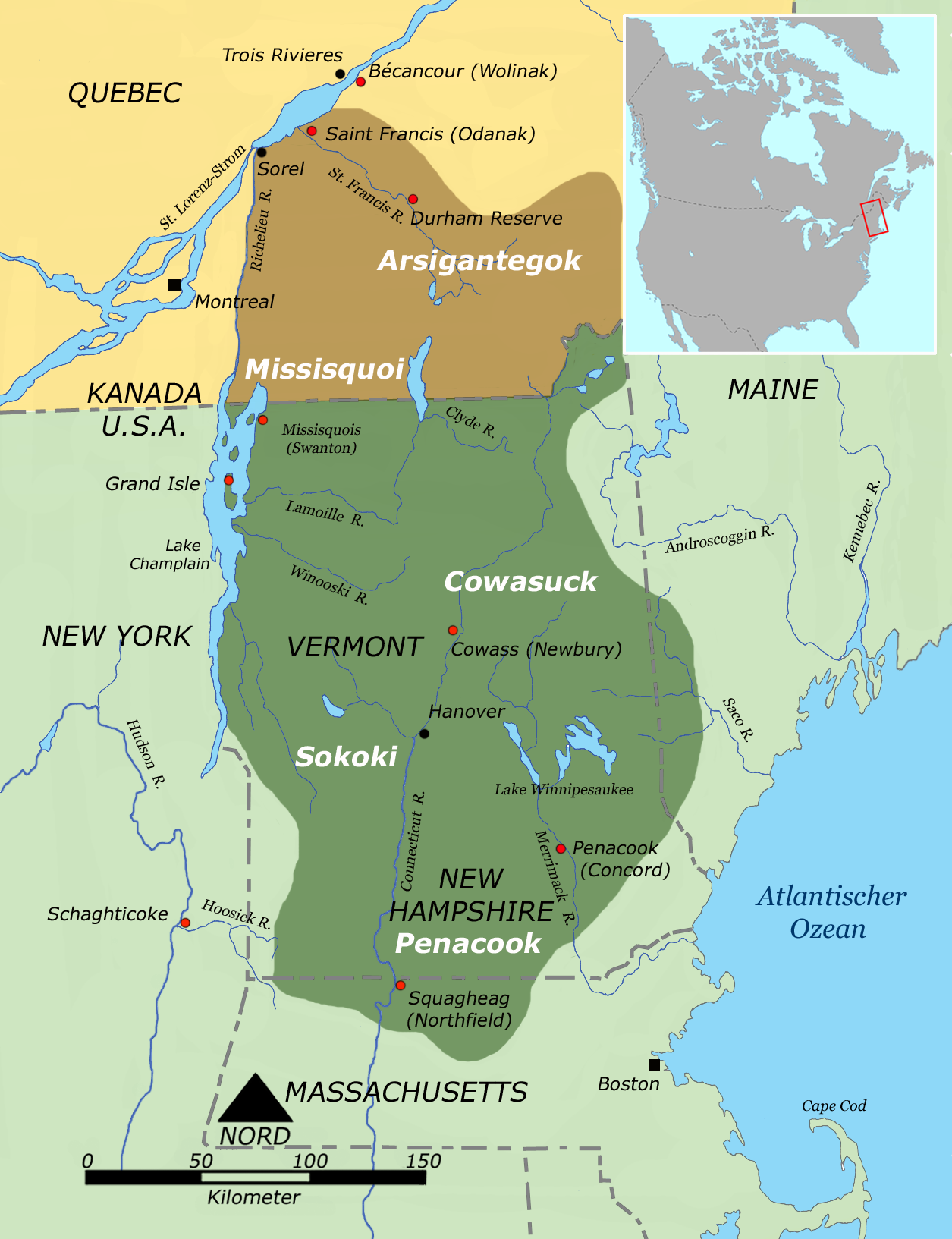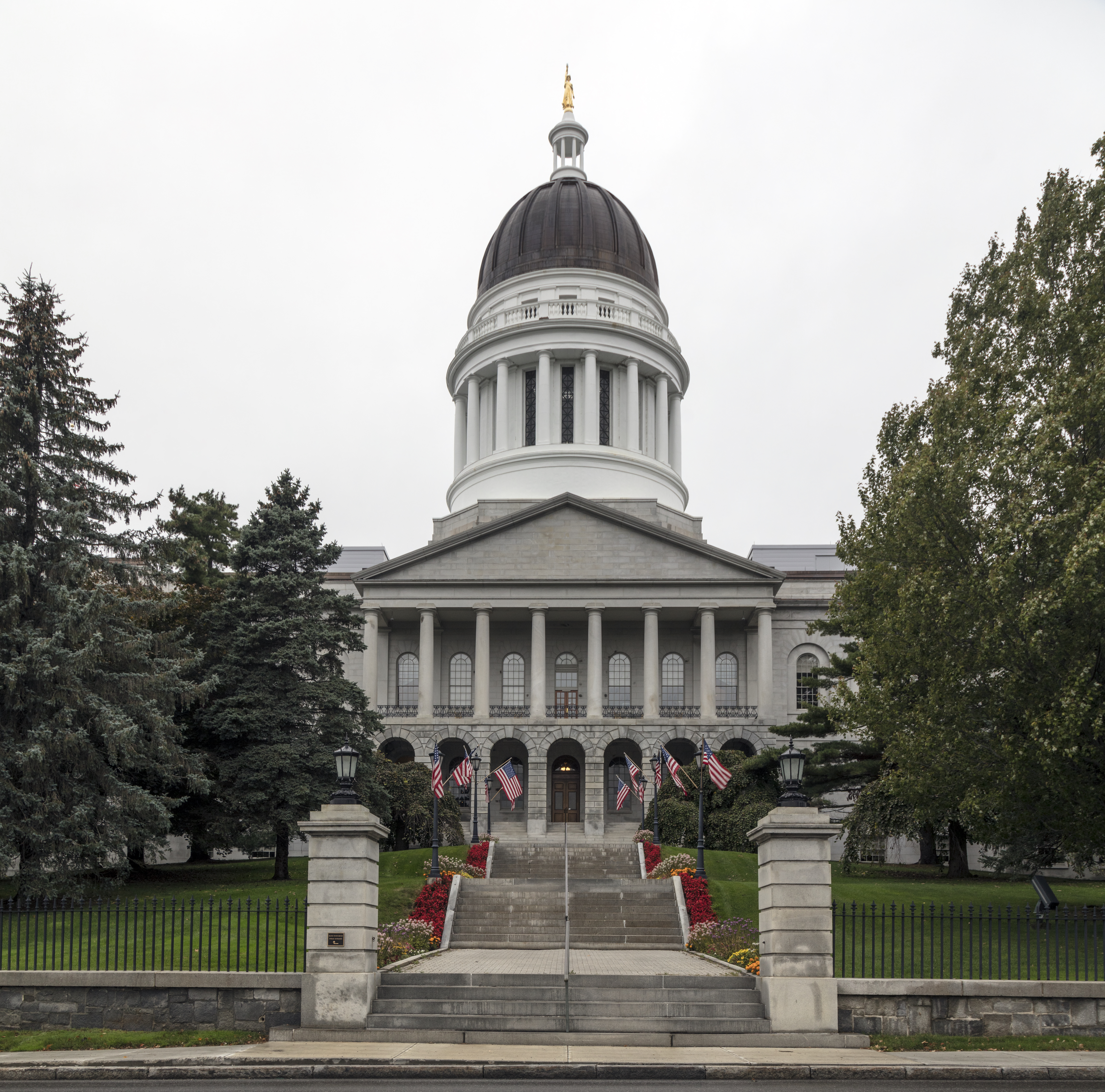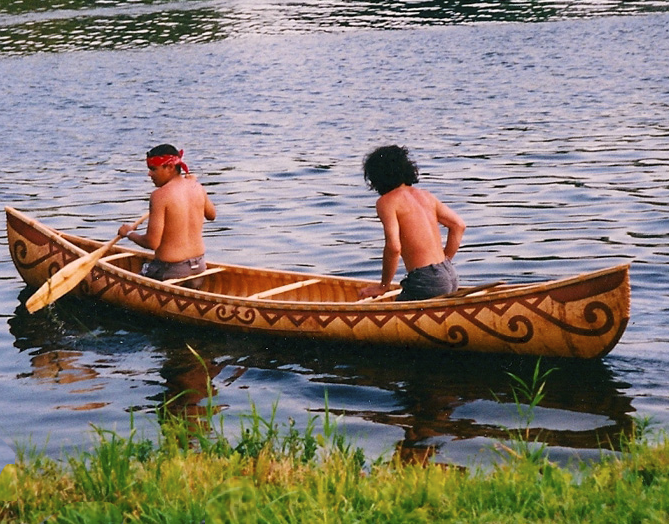|
Penobscot
The Penobscot (Abenaki: ''Pαnawάhpskewi'') are an Indigenous people in North America from the Northeastern Woodlands region. They are organized as a federally recognized tribe in Maine and as a First Nations band government in the Atlantic provinces and Quebec. The ''Penobscot Nation'', formerly known as the ''Penobscot Tribe of Maine,'' is the federally recognized tribe of Penobscot in the United States."Tribal Directory" ''National Congress of American Indians''. Retrieved 30 August 2012. They are part of the , along with the , |
Penobscot River
The Penobscot River (Abenaki: ''Pαnawάhpskewtəkʷ'') is a U.S. Geological Survey. National Hydrography Dataset high-resolution flowline dataThe National Map, accessed June 22, 2011 river in the U.S. state of Maine. Including the river's West Branch and South Branch increases the Penobscot's length to , making it the second-longest river system in Maine and the longest entirely in the state. Its drainage basin contains . It arises from four branches in several lakes in north-central Maine, which flow generally east. After the uniting of the West Branch with the East Branch at Medway (), the Penobscot flows south, past the city of Bangor, where it becomes navigable. Also at Bangor is the tributary Kenduskeag Stream. It empties into the Atlantic Ocean in Penobscot Bay. It is home to the Penobscot people that live on Indian Island, and considered to be The People's lifeblood. History Norumbega Most historians have accepted the Penobscot region as Jean Allefonsce's ... [...More Info...] [...Related Items...] OR: [Wikipedia] [Google] [Baidu] |
Penobscot Indian Island Reservation
Penobscot Indian Island Reservation (Abenaki language, Abenaki: ''Álənαpe Mə́nəhan'') is an Indian reservation for the Penobscot Tribe of Maine, a federally recognized tribe of the Penobscot people, Penobscot"Tribal Directory." ''National Congress of American Indians.'' Retrieved 30 Aug 2012. in Penobscot County, Maine, United States, near Old Town, Maine, Old Town. The population was 758 at the 2020 United States census, 2020 census. The reservation extends for many miles alongside 15 towns and two unincorporated area#U.S. Census Bureau, unorganized territories in a thin string along the Penobscot River, from its base at Indian Island, near Old Town, Maine, Old Town and Milford, Maine, Milford, northward to the vicinity of East Millinocket, Maine, East Millinocket, almost entirely in Penobscot County. A small, uninhabited par ... [...More Info...] [...Related Items...] OR: [Wikipedia] [Google] [Baidu] |
Abenaki Language
Abenaki (Eastern: ', Western: ), also known as Wôbanakiak, is an endangered Eastern Algonquian language of Quebec and the northern states of New England. The language has Eastern and Western forms which differ in vocabulary and phonology and are sometimes considered distinct languages. Western Abenaki was spoken in New Hampshire, Vermont, north-western Massachusetts, and southern Quebec. Odanak, Quebec is a First Nations reserve located near the Saint-François River—these peoples were referred to as Saint Francis Indians by English writers after the 1700s. The few remaining speakers of Western Abenaki live predominantly in Odanak and the last fully fluent speaker, Cécile (Wawanolett) Joubert died in 2006. A revitalization effort was started in Odanak in 1994; however, as of 2004 younger generations are not learning the language and the remaining speakers are elderly, making Western Abenaki nearly extinct. Eastern Abenaki languages are spoken by several peoples, incl ... [...More Info...] [...Related Items...] OR: [Wikipedia] [Google] [Baidu] |
Wabanaki Confederacy
The Wabanaki Confederacy (''Wabenaki, Wobanaki'', translated to "People of the Dawn" or "Easterner"; also: Wabanakia, "Dawnland") is a North American First Nations and Native American confederation of five principal Eastern Algonquian nations: the Abenaki, Mi'kmaq, Wolastoqiyik, Passamaquoddy (''Peskotomahkati'') and Penobscot. There were more tribes, along with many bands, that were once part of the Confederation. Native tribes such as the Nanrantsouak, Alemousiski, Pennacook, Sokoki, and Canibas, through massacres, tribal consolidation, and ethnic label shifting were absorbed into the five larger national identities. Members of the Wabanaki Confederacy, the Wabanakiyak, are located in and named for the area which they call Wabanaki ("Dawnland"), roughly the area that became the French colony of Acadia. The territory boundaries encompass present-day Maine, New Hampshire, and Vermont, in the United States, and New Brunswick, mainland Nova Scotia, Cape Breton Island, Pri ... [...More Info...] [...Related Items...] OR: [Wikipedia] [Google] [Baidu] |
Old Town, Maine
Old Town is a city in Penobscot County, Maine, United States. The population was 7,431 at the 2020 census. The city's developed area is chiefly located on the relatively large Marsh Island, but its boundaries extend beyond it. The island is surrounded and defined by the Penobscot River to the east and the Stillwater River to the west. History The Abenaki people called it ''Pannawambskek,'' meaning "where the ledges spread out," referring to rapids and drops in the river bed. The French established a Jesuit Catholic mission here in the 1680s. Nearly a century later after Great Britain took over French territory following its victory in the Seven Years' War, the area was settled by English pioneers in 1774. The name Old Town derives from "Indian Old Town", which was the English name for the largest Penobscot Indian village, now known as Indian Island. Located within the city limits but on its own island in the Penobscot River, the reservation is the current and hist ... [...More Info...] [...Related Items...] OR: [Wikipedia] [Google] [Baidu] |
Abenaki
The Abenaki ( Abenaki: ''Wαpánahki'') are Indigenous people of the Northeastern Woodlands of Canada and the United States. They are an Algonquian-speaking people and part of the Wabanaki Confederacy. The Eastern Abenaki language was predominantly spoken in Maine, while the Western Abenaki language was spoken in Quebec, Vermont, and New Hampshire. While Abenaki peoples have shared cultural traits, they did not historically have a centralized government. They came together as a post-contact community after their original tribes were decimated by colonization, disease, and warfare. Names The word ''Abenaki'' and its syncope, ''Abnaki,'' are both derived from ''Wabanaki'', or ''Wôbanakiak,'' meaning "People of the Dawn Land" in the Abenaki language. While the two terms are often confused, the Abenaki are one of several tribes in the Wabanaki Confederacy. Alternate spellings include: ''Abnaki'', ''Abinaki'', ''Alnôbak'', ''Abanakee'', ''Abanaki'', ''Abanaqui'', ''Abana ... [...More Info...] [...Related Items...] OR: [Wikipedia] [Google] [Baidu] |
Maine
Maine ( ) is a U.S. state, state in the New England region of the United States, and the northeasternmost state in the Contiguous United States. It borders New Hampshire to the west, the Gulf of Maine to the southeast, and the Provinces and territories of Canada, Canadian provinces of New Brunswick and Quebec to the northeast and northwest, and shares a maritime border with Nova Scotia. Maine is the largest U.S. state, state in New England by total area, nearly larger than the combined area of the remaining five states. Of the List of states and territories of the United States, 50 U.S. states, it is the List of U.S. states and territories by area, 12th-smallest by area, the List of U.S. states and territories by population, 9th-least populous, the List of U.S. states by population density, 13th-least densely populated, and the most rural. Maine's List of capitals in the United States, capital is Augusta, Maine, Augusta, and List of municipalities in Maine, its most populous c ... [...More Info...] [...Related Items...] OR: [Wikipedia] [Google] [Baidu] |
Maine House Of Representatives
The Maine House of Representatives is the lower house of the Maine Legislature. The House consists of 151 voting members and three nonvoting members. The voting members represent an equal number of districts across the state and are elected via plurality voting. The nonvoting members represent three of Maine's Native American tribes, though two tribes have declined to send representatives. Each voting member of the House represents around 9,000 citizens of the state. Because it is a part-time position, members of the Maine House of Representatives usually have outside employment as well. Members are limited to four consecutive terms of two years each, but may run again after two years. The House meets at the Maine State House in Augusta. Leadership of the House The Speaker of the House presides over the House of Representatives. The Speaker is elected by the majority party caucus followed by confirmation of the full House through the passage of a House Resolution. In additio ... [...More Info...] [...Related Items...] OR: [Wikipedia] [Google] [Baidu] |
Passamaquoddy
The Passamaquoddy (Maliseet-Passamaquoddy language, Passamaquoddy: ''Peskotomuhkati'', Plural: ''Peskotomuhkatiyik'') are a Native Americans in the United States, Native American/First Nations in Canada, First Nations people who live in northeastern North America. Their traditional homeland, ''Peskotomuhkatikuk'', straddles the Canadian province of New Brunswick and the U.S. state of Maine in a region called Dawnland. They are one of the constituent nations of the Wabanaki Confederacy. The Passamaquoddy Tribe in Maine is a federally recognized tribe. The Passamaquoddy people in Canada have an organization known as the Peskotomuhkati Nation, but it does not have official First Nations status. Etymology The name "Passamaquoddy" is an anglicization of the Passamaquoddy word ''peskotomuhkati'', the prenoun form (prenouns being a linguistic feature of Algonquian languages) of ''Peskotomuhkat'' (''pestəmohkat''), their endonym, or the name that they use for themselves. ''Peskotomuhk ... [...More Info...] [...Related Items...] OR: [Wikipedia] [Google] [Baidu] |
Indigenous Peoples Of The Northeastern Woodlands
Indigenous peoples of the Northeastern Woodlands include Native American tribes and First Nation bands residing in or originating from a cultural area encompassing the northeastern and Midwest United States and southeastern Canada. It is part of a broader grouping known as the Eastern Woodlands. The Northeastern Woodlands is divided into three major areas: the Coastal, Saint Lawrence Lowlands, and Great Lakes-Riverine zones.Trigger, "Introduction" 2 The Coastal area includes the Atlantic Provinces in Canada, the Atlantic seaboard of the United States, south until North Carolina. The Saint Lawrence Lowlands area includes parts of Southern Ontario, upstate New York, much of the Saint Lawrence River area, and Susquehanna Valley. The Great Lakes-Riverine area includes the remaining inland areas of the northeast, home to Central Algonquian and Siouan speakers. The Great Lakes region is sometimes considered a distinct cultural region, due to the large concentration of tribes i ... [...More Info...] [...Related Items...] OR: [Wikipedia] [Google] [Baidu] |
New England
New England is a region consisting of six states in the Northeastern United States: Connecticut, Maine, Massachusetts, New Hampshire, Rhode Island, and Vermont. It is bordered by the state of New York (state), New York to the west and by the Canadian provinces of New Brunswick to the northeast and Quebec to the north. The Gulf of Maine and Atlantic Ocean are to the east and southeast, and Long Island Sound is to the southwest. Boston is New England's largest city and the capital of Massachusetts. Greater Boston, comprising the Boston–Worcester–Providence Combined Statistical Area, houses more than half of New England's population; this area includes Worcester, Massachusetts, the second-largest city in New England; Manchester, New Hampshire, the largest city in New Hampshire; and Providence, Rhode Island, the capital of and largest city in Rhode Island. In 1620, the Pilgrims (Plymouth Colony), Pilgrims established Plymouth Colony, the second successful settlement in Briti ... [...More Info...] [...Related Items...] OR: [Wikipedia] [Google] [Baidu] |
Verona Island, Maine
Verona Island is a town located on an island of the same name in the Penobscot River in Hancock County, Maine, United States. The population was 507 at the 2020 census. History The island and community has undergone numerous name changes. It was originally Penobscot Island, part of the Waldo Patent. When Henry Knox bequeathed it to his orphaned grandchildren, it became known as Orphan Island. In 1839 it became the plantation of Wetmore Isle. The name was changed to Verona (after Verona, Italy) upon its incorporation as a town on February 18, 1861. The town lengthened its name to Verona Island, matching the name of the landform on which it was located, in a March 27, 2004 referendum. The island was once a shipbuilding village. In 1905 the last vessel was built. This was the ''Roosevelt'', which carried Robert Peary from New York to the Arctic in 1908 for his final expedition to the North Pole. The Waldo–Hancock Bridge (carrying U.S. 1), which opened November 16, 1931, to ... [...More Info...] [...Related Items...] OR: [Wikipedia] [Google] [Baidu] |

